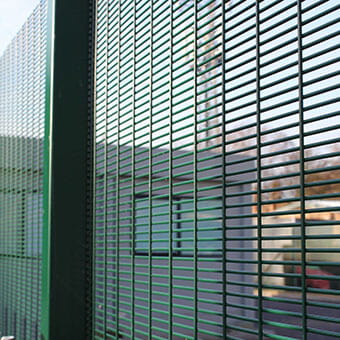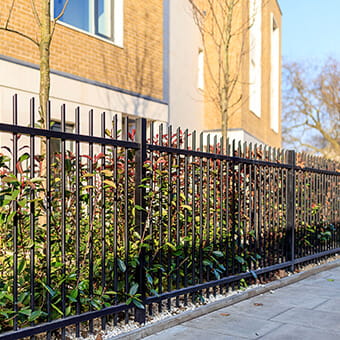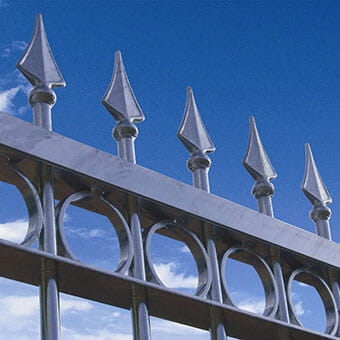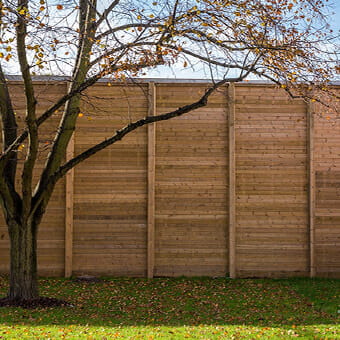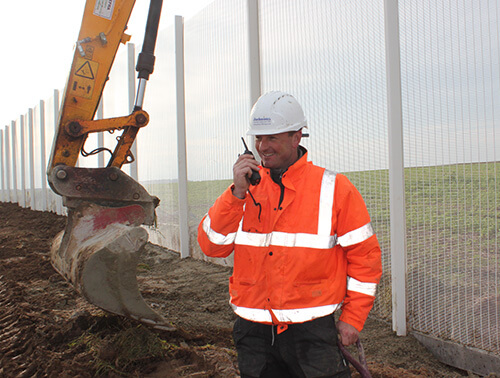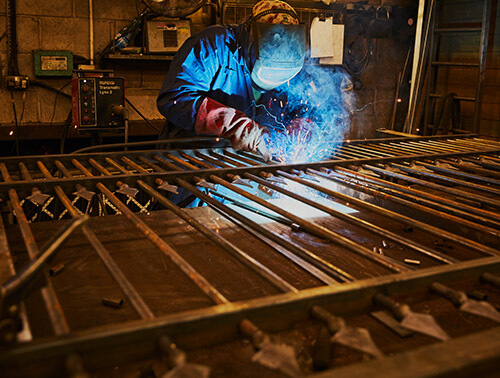Our other sites:
It may seem obvious, but there is a difference between temporary and permanent solutions, or several differences for that matter. Again, it should be a given, but temporary solutions should only be used for short periods of time, for reasons which we will go through in this post.
Installing fencing for the future
There are different types and grades of temporary fencing available. While we don’t recommend using temporary fencing for as long as our panels have clearly been in place in the image, we can see how well our fencing has lasted even in this environment.
The first thing to determine is what will be happening to the site after construction is complete, as there are different reasons for erecting a temporary fence – either to temporarily secure a boundary before a permanent solution is installed, or to keep construction sites and machinery safe and out of bounds to the public while work continues. If a permanent fence will be needed anyway, try and get the fence planned and specified early on, so that it can be installed before or during the construction phase. This way, the site will be more secure, and temporary fencing will only be needed for the recommended period of time while waiting for the permanent fence installation. If there won’t be a permanent perimeter fence at the end of the construction fence, it can be tricky to know whether to invest in more robust or higher quality temporary fencing if you’re unsure of the timeframe of your project, but generally the larger the construction build, the higher the quality of the temporary fencing should be, as it will go on for longer.
There are also ‘semi-permanent’ foundation free fencing solutions available on the market which offer more security than standard ‘express’ panels, but these still have no guarantee and can be very costly for a temporary solution as well as having security flaws and increasing risk.
If we think of a permanent fencing solution, the posts will be secured into the ground and the weaknesses will be in the connections between the panels to the posts and the pales to the panels. This is where a well designed permanent security fence differs from a less secure fence. The connectors from panels to posts should be vandal proof, on the inside of the fence or hidden, and a secure fence usually wouldn’t be designed with bolts holding the pales to the panel, they would be manufactured as part of the panel.
A ‘semi-permanent’ foundation free fence should be designed in the same way as above but the extra risk is at the posts and foundations. If the posts are not secured into the ground, they must be attached to something heavy to hold it in place. At this point, there is usually a connector between the weight and the fence to the hold the fence upright, this is an extra vulnerability as if removed then the fence can be toppled and the site can be accessed. Another vulnerability is the weight itself, for ease of installation the weight is usually a container of some kind that is filled on site for ease of installation. Water, sand, or building aggregates are common materials that are added to the inside of the plastic container but again for ease of installation and dismantling, the sand or material is often kept in bags allowing an attacker to easily remove the weight, putting the whole fence system at risk.
Noise Reduction and Privacy
Generally, construction sites require noise reduction and often privacy in addition to their temporary fencing, which is commonly provided using acoustic blankets. Check whether the finished site also needs noise reduction and privacy, which is more than likely particularly if it’s a new housing development, as it may be worth installing a permanent acoustic barrier immediately and skipping the temporary stage. Temporary industrial portable acoustic barriers that are attached to fencing do provide a solution but they are often only supplied with a 1 year guarantee making them costly and not environmentally friendly, often ending up in landfill after one or two jobs.
A time and place for temporary fencing
Temporary solutions do have their benefits, for example when you’re planning the placement of a hostile vehicle mitigation solution. Hostile vehicle mitigation barriers can be an immense financial commitment, and the placement of them needs to be exactly right to ensure the most protection is achieved. Temporary vehicle security barriers can help to judge where a permanent measure will go, or often available with rapid deploy, reduce the risk by filling the gap while waiting for the permanent measure to be manufactured and installed. It’s essential that you don’t become complacent about security or slack in maintenance schedules or sourcing a permanent solution just because you’ve installed a temporary fence. Weeks quickly pass without repairs or works being finished, and this could lead to security breaches because the fencing isn’t appropriate.
Temporary fencing by design has a larger footprint; taking up more space to ensure it doesn’t fall over, as it is not concreted to the ground. This means it may not be suitable for every site due to space constraints or aesthetics as it can create an eyesore. It can also be a trip hazard. When temporary fencing is left for too long it may also fall into disrepair, with broken wires creating an injury hazard.
Fencing guaranteed to last
Permanent security fencing should be made from high quality materials and provided with a guarantee to ensure it serves its intended purpose and protects your site for years to come. Temporary fencing is generally made of lower quality materials and fixings such as lightweight wires, which is not suitable for providing security and may leave your site open to vandalism and crime. Our permanent security fencing features anti-vandal fixings and our mesh panels are made from durable wire which is measured after coating to provide an accurate representation of strength. In addition, low quality materials used in temporary fencing means its lifespan is not as long as permanent metal fencing with a guarantee. If you’re concerned about sustainability, check when ordering that the panels are reused or recycled after use, or repaired by the supplier if damaged. Simply disposing of temporary fencing has a negative impact on the environment. Don’t forget that transportation also adds environmental pressure as well as logistics and organisation, and opting for a permanent measure from the start means that the journeys spent delivering and collecting used fencing are minimised.
Related products
Jacksons Security has a range of products relating to this article, all complete with our 25 year service life guarantee. If you cannot find the item you are looking for, please do not hesitate to call our friendly sales team.
Related Content
Top
